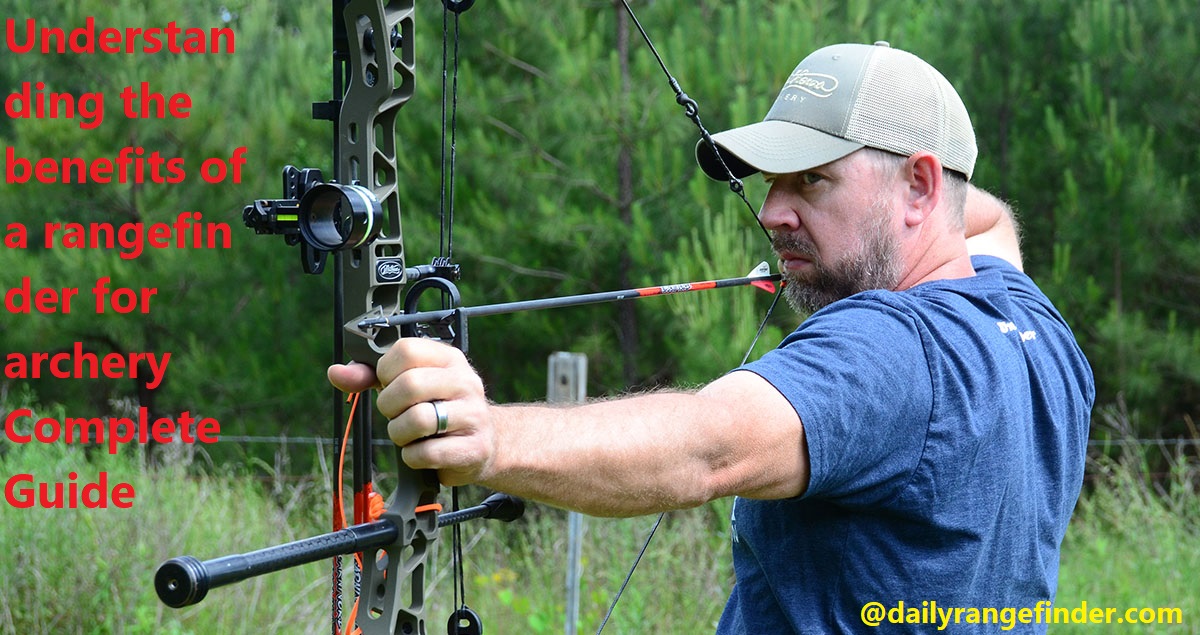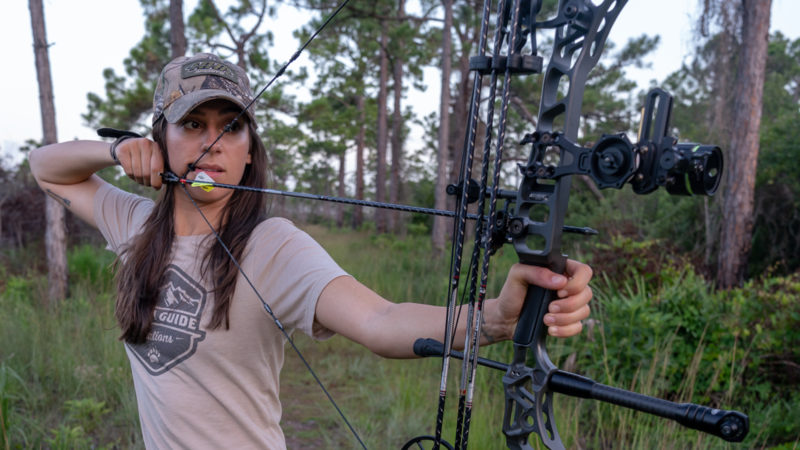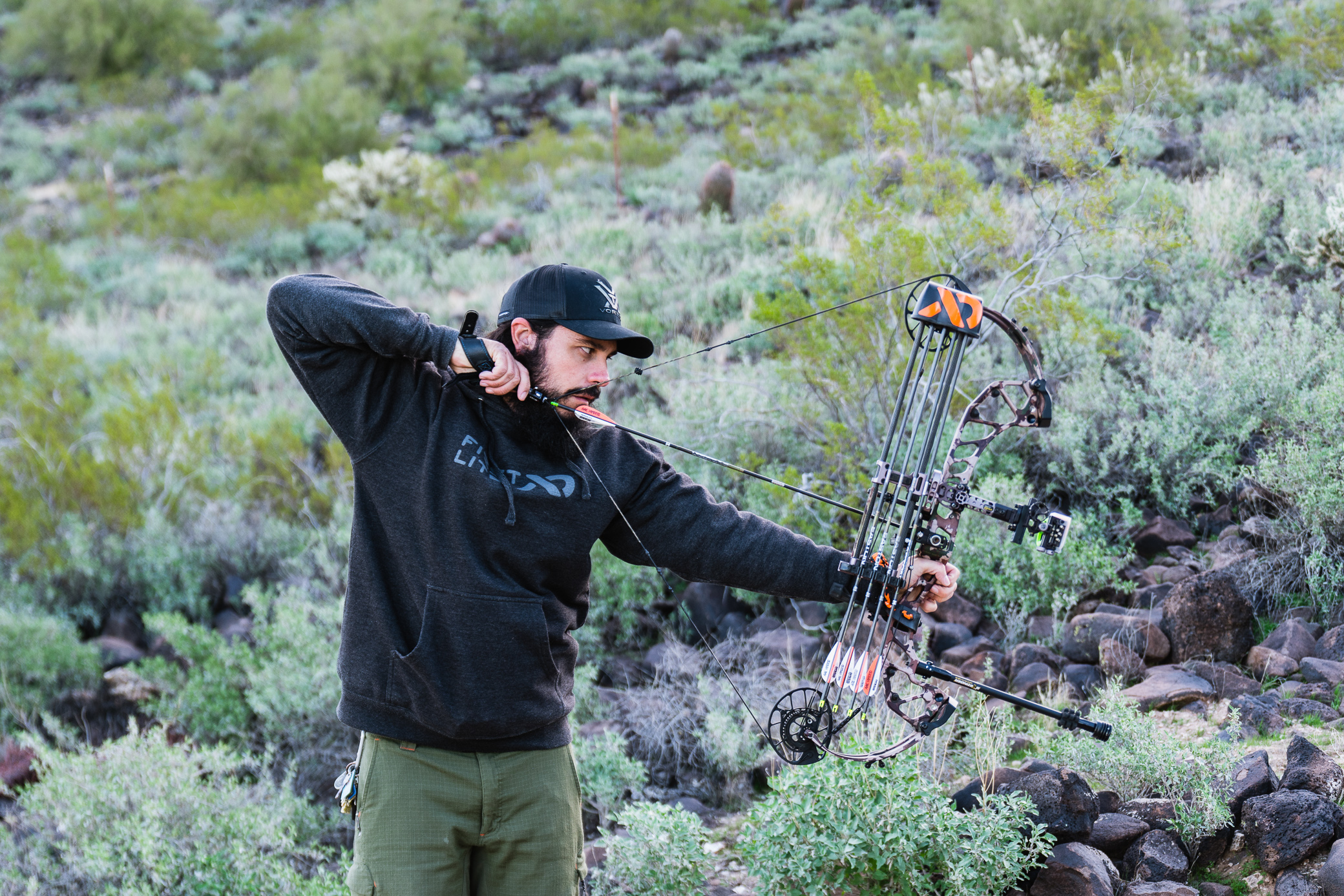Are you looking for ways to up your archery game? Look no further! A rangefinder can help you take your skills to the next level and take your accuracy and precision to the extreme.
With this guide, we’ll explore why a rangefinder is essential for archers, and how it can give you an advantage over your opponents. You won’t want to miss out on this!
The world of archery has seen its popularity skyrocket over the past few years, and for good reason. Not only is it a thrilling sport that will test the limits of your aim and skill, but it also provides an excellent escape from everyday life. Whether you’re a novice archer or a seasoned pro, there is no doubt that the practice can be greatly enhanced by the use of quality archery equipment. A rangefinder is one such item and can provide you with remarkable benefits if used correctly.
In this guide we will take a detailed look at what rangefinders are, how to use them properly and why they can give you an edge when it comes to honing your craft with a bow and arrow. We’ll also explore the various types available on the market today, so that you can make an informed decision when choosing your own device. So without further ado, let’s jump into understanding rangefinders!
Advantages of Using a Rangefinder in Archery
Using a rangefinder can provide improved accuracy and confidence when shooting. With a rangefinder, archers can acquire targets quickly with more accurate results. By providing exact measurements, archers know with certainty the distance to their target even if it is difficult to judge by sight.
Rangefinders provide additional features that make them even more appealing for archery. Many models come with multiple reticle options such as ones particularly suited to bows and crossbows and pre-set profiles that can be adjusted to different parameters (e.g., arrow weight and wind resistance). Most have an illuminated display so they can be used in low-light conditions or even total darkness. This allows you to get an accurate measurement of your target any time of day or night.
In addition, many rangefinders come equipped with advanced technology like angle compensation which provides corrected readings when shooting up or downhill so you know exactly how far your arrow will travel at the given angle of elevation. This is hugely beneficial in typical terrain found in the open field or rugged mountainside where there is often significant terrain variation between shooter and target. Lastly, advanced rangefinders have features specific for bow hunting including memory banks used for multiple targets distances and closeness calculation warning so you know when game is within a certain distance of you – all giving hunters an advantage over traditional hunting tools like binoculars and compass/GPS units.

Accurate distance measurements
Having accurate distance measurements can be useful in any type of archery situation. Rangefinders are a great way to determine the exact distance of your target, as they measure distances with lasers. In addition to being highly accurate, rangefinders are also very fast and easy to use, taking out the guesswork involved when trying to estimate yardage.
Rangefinders come in a variety of configurations, lenses, and capabilities. It is important for archers to understand their options so that they can select one most suited for the situations and distances encountered in their sport or hunt.
When selecting a rangefinder for archery, there are three important criteria: magnification, range capability and accuracy. For bowhunting and competitive target shooting purposes, generally 6x power or less is recommended for less weight and improved stability when aiming at distant targets. The effective measuring range will typically vary from as little as 10 yards/meters up to 1000 yards/meters depending on the device. Modern digital range finders like those offered by Bushnell have an accuracy rate +-1-yard/+-1 meter capability which makes them suitable even at longer ranges than more experienced shooters could typically accurately estimate with just their skill level alone.
Improved shot placement
Using a rangefinder alone can dramatically improve your shot placement with a bow and arrow. The most basic rangefinders measure the distance to a stationary target with the press of a button and then use this information to calculate how much power is needed for the arrow. This takes out all of the guesswork, making it easier to hit a target accurately.
A rangefinder also eliminates the need to use arc estimation which can be difficult for relative beginners in archery. Furthermore, it eliminates any potential for inaccuracy due to personal judgement; you won’t need to estimate wind speed or slope when firing an arrow – rather everything is measured accurately through precise calculations on the rangefinder itself.
Lastly, having precise knowledge of how far away your target is helps you determine what type of equipment (e.g. arrows) you should be using at that particular distance and shooting angle, allowing your setup and form to be as efficient as possible.
Time-saving
Using a rangefinder for archery can be a time-saving process that helps you hit your target more accurately. For many archers, using a rangefinder to measure the distance between them and their target is an essential part of their bow-shooting process.
A rangefinder allows a shooter to easily aim their shot by calculating the exact distance between them and the target, rather than trying to estimate based on experience or guessing. This reduces the amount of time spent trying to determine how far away the target is and improves accuracy by giving shooters an accurate indication of how far they are from their intended destination. Furthermore, with a digital rangefinder, all measurements are taken instantly, eliminating any guesswork involved in taking manual measurements.
Consistent performance
The use of a rangefinder in archery can help deliver consistently strong performances. When you know the distance you’re shooting at, you can make more accurate adjustments to your shooting form. This reduces inconsistencies and delivers better accuracy in each shot. Here are some other benefits that come with using a rangefinder:
-Rangefinders allow for precise trajectory calculations, which make it easier to ensure optimum arrow flight.
-They enable the user to accurately determine the distance from the target and make their shot from the desired position with confidence.
-Rangefinders also provide real-time feedback on where your arrow is hitting so you can make adjustments accordingly.
-Using a rangefinder can help to eliminate distractions as well, allowing users to stay focused on their shot without unnecessary variables disrupting them.
-Finally, rangefinders provide consistency when shooting at multiple targets since they eliminate guesswork and allow users to acquire the optimal position quickly.

Factors to Consider When Choosing a Rangefinder for Archery
When selecting a rangefinder for the sport of archery, there are many factors to consider. The type of rangefinder, the quality of optics and laser, the accuracy of the readings, features such as angle compensation and other features available can all make a difference in your shooting experience.
Rangefinder Type – Laser rangefinders are the preferred type used in archery. They provide accurate readings up to 30 yards away and offer complete vertical/horizontal readouts with extreme accuracy. Ironsights rangefinders are less accurate at long distances because they measure by triangulation rather than laser projection. However, they are more affordable models and better suited to short-range shots that don’t require precise aiming calculations.
Optics Quality – The quality of optics is key when choosing a rangefinder for archery purposes. High-end optics will provide clear views at even greater distances than mid-level ones. An illuminated reading from a digital screen also makes it easier to see in low light conditions without having to squint or strain your eyes for clarity.
Laser Accuracy – Rangefinders come with lasers that project onto an X/Y plane (vertical and horizontal angles). It is important for the laser to be precision accurate so that you can accurately measure distance between you and your target using mathematical formulas calculated from the angles given off by the laser beam when it reflects off various objects in it’s path along with range estimation calculators built into most rangefinders on today’s market.
Angle Compensation– Angle compensation is especially useful when shooting uphill or downhill shots over long distances beyond normal bow hunting ranges which requires shooters accuracy calculations with pitch/incline measurements taken into account as two or three degrees pitch or incline can make drastic changes on arrow drop points due to gravity over long distances beyond 30 yards depending on Arrow weight held consistent at all yardages after dialing elevation adjustments into projectile trajectories. Some general maintenance tips suggest that proper cleaning of lenses inside & out remove any dirt & moisture build up which over time affects clarity affecting shot placement consistency keeping lenses clear if stored for extended periods ensuring maximum performance every time you’re out shooting!
Magnification power
The magnification power of a rangefinder determines the level of detail with which you can “zoom in” on your target. Usually, ranged finders offer around 5 to 7 times magnification, which is enough for most types of archery. Having greater magnification allows you to more accurately judge distances and helps steady your aim before shooting the arrow.
Besides having higher levels of magnification, it’s important to get a rangefinder with a quick response time so that you don’t lose focus or momentum when taking your shot. Rangefinders also feature lenses specifically designed for different lighting situations and features like multi-coated lenses to enhance clarity and improve accuracy.
It’s vital that you take into account these various features to ensure you are purchasing a rangefinder capable of meeting all your needs while hunting or shooting tournaments.
Range capability
Rangefinders are a valuable tool for archers, as they can help you measure the distance to your target. The range will determine the power setting you need to be using for the arrow and give you a better chance of hitting your target. Rangefinder technology has become increasingly advanced and now offers much more than just measuring range. With newer models, you can even measure the wind speed and angle of inclination/declination to better account for these factors in your shot. Some high-end rangefinders also have an integrated ballistic calculator which can help you get a flatter trajectory with your arrows.
No matter what level of archer you are, having a quality rangefinder will give you peace of mind that your aiming is accurate and this increase in accuracy will pay off when it counts — at competitions or out hunting in the field. When looking for a rangefinder it is important to look at both its maximum ranging capability (how far away you can make correct readings) and accuracy (how precisely the unit reads ranges). Modern laser-based models offer excellent accuracy rates from up to several hundred yards away, depending on the model.
Accuracy
Rangefinders are an essential component of accurate shooting in archery, as they provide shooters with a consistent reference point for shots and can help to identify problems in their techniques. By measuring the distance between shooter and target, rangefinders can take the guesswork out of pinpointing shot direction, making shots easier to align and ensuring accuracy.
Rangefinders also give the shooter more information than standard sighting equipment, allowing them to make adjustments on short-range shots that may be affected by environmental factors like terrain or wind. This can lead to improved accuracy and consistency over long-term shooting.
Size and weight
When shopping for a rangefinder, size and weight should be taken into consideration. Rangefinders come in a variety of sizes, ranging from small and compact to bulky and heavy. Smaller models are lighter and more comfortable to carry; however, they may have weaker batteries. Larger models tend to give more accurate readings while offering extended battery life but they can be more cumbersome.
When choosing the right size and weight of rangefinder, it is important to consider how you will use it as well as whether you will be carrying it over long distances or in a variety of weather conditions.

Conclusion
This guide provides an overview of rangefinders and their benefits for archery. Rangefinders provide a significant improvement in accuracy for all types of shooting, and can be used to measure distance accurately up to 1000 yards. They are especially helpful for hunting, as they allow the shooter to account for varying terrain and distances between themselves and the target.
Rangefinders require higher precision when aiming than bows with sights do, allowing for shots that are more accurate and consistent. Combined with knowledge of ballistics, rangefinders provide an effective way to measure distances and determine ideal shots. Ultimately, if you are looking to improve your archery accuracy, using a rangefinder is one of the best choices available.
FAQ’s
Why use a rangefinder for archery?
A rangefinder helps archers to determine the distance between themselves and their target accurately.
What is the purpose of a rangefinder?
The primary purpose of a rangefinder is to measure the distance between the user and a target accurately.
Are rangefinders worth it?
Rangefinders are worth it if you need to measure distances accurately and quickly, especially in activities like archery, golf, or hunting.
What is the benefit of rangefinder?
The benefits of using a rangefinder include increased accuracy, improved speed, and reduced guesswork in determining distances.
What is a disadvantage of a rangefinder?
The disadvantage of a rangefinder is that it can be affected by environmental factors like fog, rain, and glare, which can affect its accuracy.
What are the 2 types of rangefinder?
The two types of rangefinders are laser rangefinders and optical rangefinders.
Do pros use range finders?
Yes, many professionals in various fields, including golf, hunting, and archery, use rangefinders to improve their accuracy.
What is the working principle of rangefinder?
The working principle of a rangefinder varies depending on the type, but generally, it measures the time it takes for a laser or sound wave to bounce off a target and return to the device.
Are rangefinders good for beginners?
Yes, rangefinders can be helpful for beginners who are still learning how to estimate distances accurately.
Should a beginner use a rangefinder?
It is not necessary for a beginner to use a rangefinder, but it can be a helpful tool in learning how to estimate distances accurately.
See Also :
- Best rangefinder for long range shooting
- Best rangefinder for hunting
- Best rangefinder for disc golf
- Best rangefinder for bow hunting
- Best rangefinder for archery

